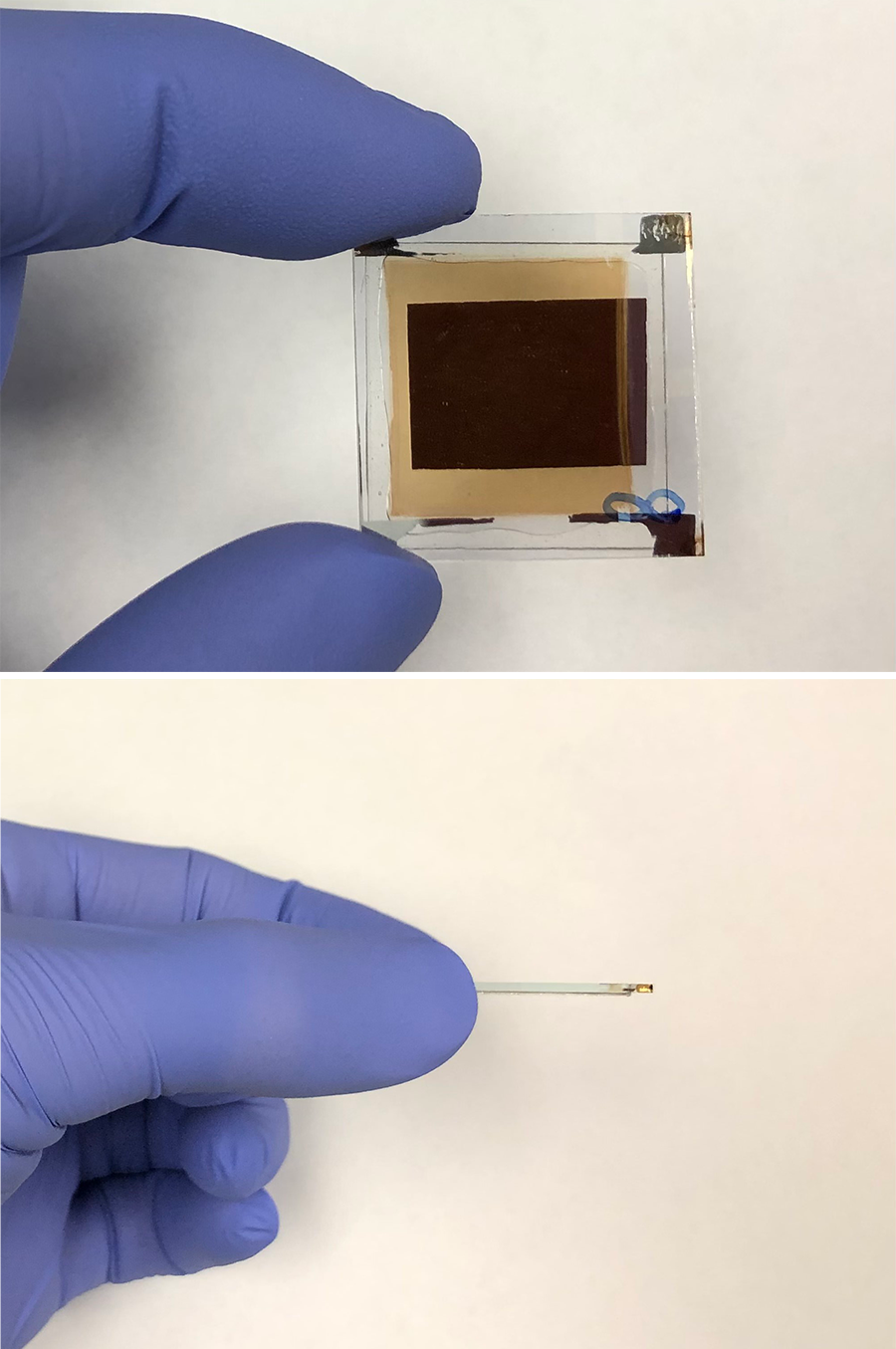May 6 2021
Imagine mapping out an individual’s blood vessels while simultaneously monitoring heart rate without making contact with the person’s skin, seeing through fog and smog, and seeing through silicon wafers to check the composition and quality of electronic boards.
 The new infrared imager is thin and compact with a large-area display. Image Credit: Ning Li.
The new infrared imager is thin and compact with a large-area display. Image Credit: Ning Li.
The above examples are just a few of the capabilities of a novel infrared imager designed by a research team headed by electrical engineers from the University of California, San Diego.
This imager detects a part of the infrared spectrum, known as shortwave infrared light (wavelengths between 1000 and 1400 nm), which is right beyond the visible spectrum (between 400 and 700 nm). But shortwave infrared imaging should not be confused with thermal imaging, which detects relatively longer infrared wavelengths emitted by the body.
The new infrared imager works by illuminating shortwave infrared light on a target area or object, and then changing the low energy infrared light—that is reflected back to the device—into higher energy, shorter wavelengths that can be seen by the human eye.
It makes invisible light visible.
Tina Ng, Professor of Electrical and Computer Engineering, UC San Diego Jacobs School of Engineering
Although infrared imaging technology has been around for many years, a majority of the systems are complex, bulky and costly, usually needing a separate display and camera. These systems are generally made using inorganic semiconductors, which are rigid, expensive and contain dangerous elements, like lead and arsenic.
The new infrared imager designed by Ng’s research team resolves these problems. The imager integrates the display and the sensors into a single thin device, rendering it simple and compact.
The infrared imager has been designed using organic semiconductors, and hence it is safe, flexible and cost-effective to use in biomedical applications. This technology also delivers improved image resolution when compared to some of its inorganic equivalents.
Described recently in the Advanced Functional Materials journal, the new imager provides more benefits. It visualizes more shortwave infrared spectrum, between 1000 and 1400 nm, when compared to present-day analogous systems that usually see just below 1200 nm.
To date, the new imager has one of the biggest display sizes of infrared imagers—that is, 2 cm2 in area. And since the imager has been created using thin-film processes, it is economical and easy to scale up to create even bigger displays.
Energizing Infrared Photons to Visible Photons
The new imager is composed up of many semiconducting layers, each measuring hundreds of nanometers thin and placed on top of each other.
Three of these layers, each composed of a different organic polymer, are the major players of the imager—an organic light-emitting diode (OLED) display layer, a photodetector layer, and an electron-blocking layer in between these two.
The photodetector layer produces an electric current by absorbing shortwave infrared light, or low energy photons.
This electric current travels to the OLED display layer where it is changed into a visible image, that is, high energy photons. The electron-blocking layer—an intermediate layer—prevents the OLED display layer from losing any current. It is this mechanism that allows the device to create a clearer image.
This process of changing low energy photons into higher energy photos is called upconversion. This upconversion process is electronic, which is a unique feature.
The advantage of this is it allows direct infrared-to-visible conversion in one thin and compact system. In a typical IR imaging system where upconversion is not electronic, you need a detector array to collect data, a computer to process that data, and a separate screen to display that data. This is why most existing systems are bulky and expensive.
Ning Li, Study First Author and Postdoctoral Researcher, UC San Diego Jacobs School of Engineering
Ning Li works in Ng’s laboratory.
Another unique feature of the imager is that it can efficiently offer both electronic and optical readouts.
This makes it multifunctional.
Ning Li, Study First Author and Postdoctoral Researcher, UC San Diego Jacobs School of Engineering
For instance, when the team shined infrared light on the back of a person’s hand, the new imager offered a clear picture of the person’s blood vessels while simultaneously capturing the person’s heart rate.
The investigators also utilized their novel infrared imager to see through a silicon wafer and smog. In one demonstration, the team positioned a photomask patterned with “EXIT” in a compact chamber filled with smog. In another demonstration, they positioned a photomask patterned with “UCSD” on the backside of a silicon wafer.
Infrared light enters through both silicon and smog, making it viable for the imager to observe the letters in both these demonstrations. This would be handy for applications, like inspecting silicon chips for defects and helping self-driving cars see in bad weather conditions.
The team is now exploring ways to enhance the efficiency of the imager
The study was funded by the National Science Foundation (ECCS-1839361) and Samsung Advanced Institute of Technology. It was partly carried out at the San Diego Nanotechnology Infrastructure (SDNI) at the University of California, San Diego, a member of the National Nanotechnology Coordinated Infrastructure, which is financially supported by the National Science Foundation (grant ECCS-1542148).
Infrared imager (Ng lab)
Video Credit: Ning Li.
Journal Reference:
Li, N., et al. (2021) Organic Upconversion Imager with Dual Electronic and Optical Readouts for Shortwave Infrared Light Detection. Advanced Functional Materials. doi.org/10.1002/adfm.202100565.